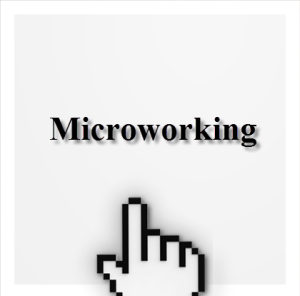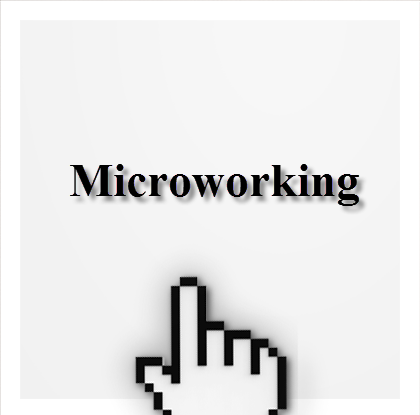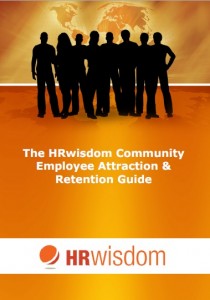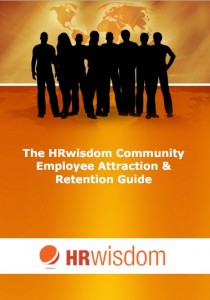In today’s HRwisdom post we are delving into building a resilient workforce.
 It is important to do this because many business managers and human resources professionals focus on finding the right type of people to bring in to the organisation but then run out of time to find ways and keeping these great people.
It is important to do this because many business managers and human resources professionals focus on finding the right type of people to bring in to the organisation but then run out of time to find ways and keeping these great people.
We are bringing this issue to your attention by sourcing an excellent article on team building which we feel will be of great use to you . . .
Building a Resilient Workforce
By David Athony Lee
The more resilient your workforce, the greater your ability to:
- Adapt nimbly to marketplace changes.
- Provide friendly, alert, loyalty-generating customer service.
- Implement change rapidly, with minimal resistance.
- Get maximum productivity from your employees without burning them out.
- Enjoy organizational effectiveness because teams and departments work well together, rather than have an “us” versus “them” mentality that festers in a stressed out environment.
- Foster a “can do” spirit or what Southwest Airlines calls a “Warrior Spirit.”
So How Do You Do Create A Stress Resistant, Resilient Workforce?
1. Remove Unnecessary Sources of Stress – Smart employers ask employees “What do we do that drives you crazy?” “What do we do that gets in the way of your doing your job?” Employee energy squandered dealing with bureaucratic hassles and other obstacles to performance is employee energy not available for innovation and productivity. It’s also energy that could make the difference between employees facing challenge with a “Bring it on!” attitude rather than an “I can’t handle another thing on my plate!” attitude. Find out which rules, red tape, need to go. Ferret out and remove any and all unnecessary obstacles. Doing so will recover a massive amount of employee energy that can be channeled to productive use.
2. Remove as Much Ambiguity As Possible – While everyone knows it is important to keep employees in the loop, few employers do a good job at this. If you’re serious about keeping employee morale high and building organizational resilience, you need to shift this idea from “know it” to “act on it.” The more employees know what’s going on, the less time and energy they spend wondering-and worrying-about what they don’t know. Research on stress and control shows that when we know what is going to happen-even if it’s bad-we feel less stressed than when we are faced with the unknown. Find out from employees where they feel left in the dark and how best to keep them in the know.
3. Keep the Dream Alive – Having employees who are inspired and engaged is even more important-and difficult to accomplish-during challenging times. When employees are animated by a compelling vision of a better future or how they can make a difference in the world, they bring their Higher Selves to work, rather than their Lower, It’s-All-About-Me Selves.
Keep the dream alive by sharing stories of the great things you’re doing, stories of employees making a difference, and customer letters of appreciation. Make this a regular part of meetings, company newsletters, and any communication.
4. Make Sure You Set Your People Up For the Thrill of Victory and Not the Agony of Defeat – If employees’ daily experience is one of frustration and failure, they will bring that mindset and emotional state to everything they do-including their response to major changes you ask them to make. By making sure employees have the tools, training, and resources to excel at their jobs, you not only get greater productivity and work quality, you also get employees who feel like-and act like-“Can do” winners.
5. Celebrate Wins – Celebrating both company and individual victories doesn’t just create a positive “vibe”. It also helps workers see themselves as part of a winning team and themselves as effective. This mindset obviously fosters a more “Can do” attitude and courageous response to challenges than if employees see themselves as “losers” and part of a hapless, beleaguered team.
Furthermore, when difficult times brings a steady stream of negative news, it’s easy to see oneself as a victim of circumstances. By consciously calling attention to accomplishments and successes, you offset the doom and gloom with genuine positivity. By sharing stories of employees doing great things, you also strengthen the belief that you are a team of winners who can accomplish great things. Because emotions affect perception, shifting the ambient emotional state of your workforce to a more upbeat, hopeful state, means employees are more apt to look at challenges as something they can overcome, rather than insurmountable obstacles.
6. Balance “We need to move on” with “I feel your pain.” – When people don’t feel their distress is heard or respected, they stay stuck in “broadcast mode.” They can’t hear-nor do they care about-what you have to say. Make sure you verbally acknowledge your employees’ distress over major changes and difficulties. Don’t just launch into an “It is what it is. Get over it” speech and expect that to work. Great leaders acknowledge the emotions and perceptions of their followers during difficult times, and then shift into their vision of the future and how each person has a role in making that vision a reality. Doing so not only inspires your employees-because they know what they can do to make a difference-it also builds stronger relationships between employees and management.
David Lee is the founder of HumanNatureAtWork.com and the author of over 60 articles and book chapters on optimizing employee performance. To download more of his articles, along with “61 Questions That Can Transform Your Workforce”, go to: http://www.HumanNatureAtWork.com]HumanNatureAtWork.com.
Article Source: Building a Resilient Workforce
We hope you have enjoyed this thought-provoking article from David Lee.
As mentioned earlier, at HRwisdom we feel this discussion on team building is an important part of our overall focus on employee attraction and retention. This is because one of our guiding principals in staff management is: “Nothing operates in isolation.”
There is no point in inventing weird or wonderful ways of finding more job candidates and bringing them on board only to destroy shareholder value by pushing staff through a broken system.
As always in managing your workforce, there is a balanced approach. Efficient and effective team development goes a long way to maintaining the right balance.
HRwisdom










